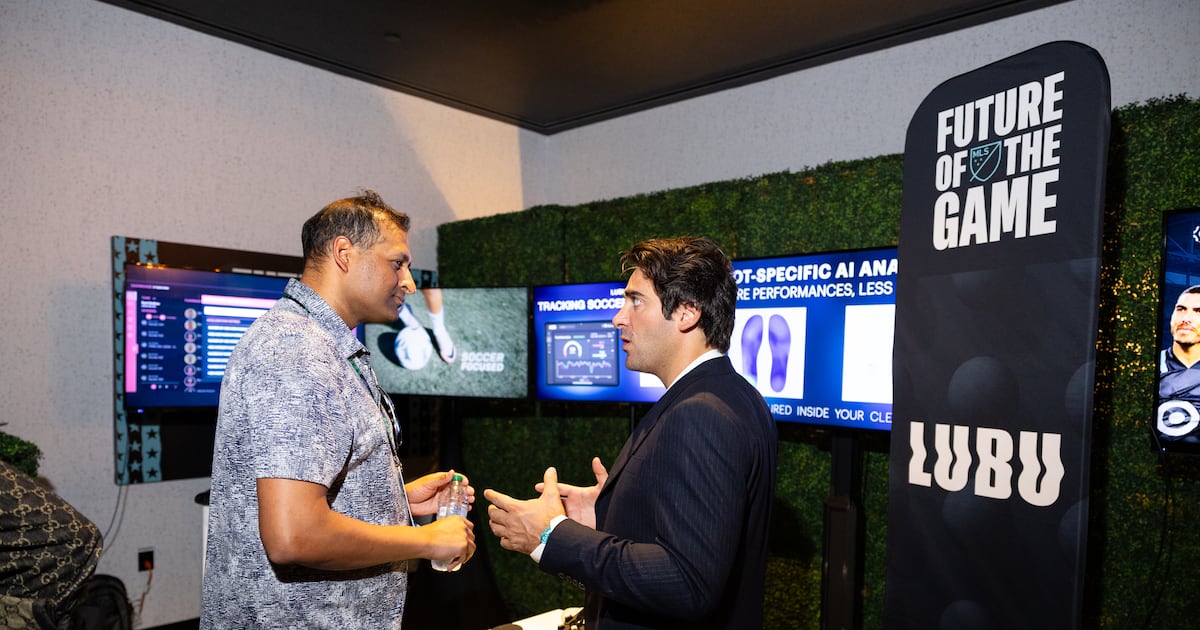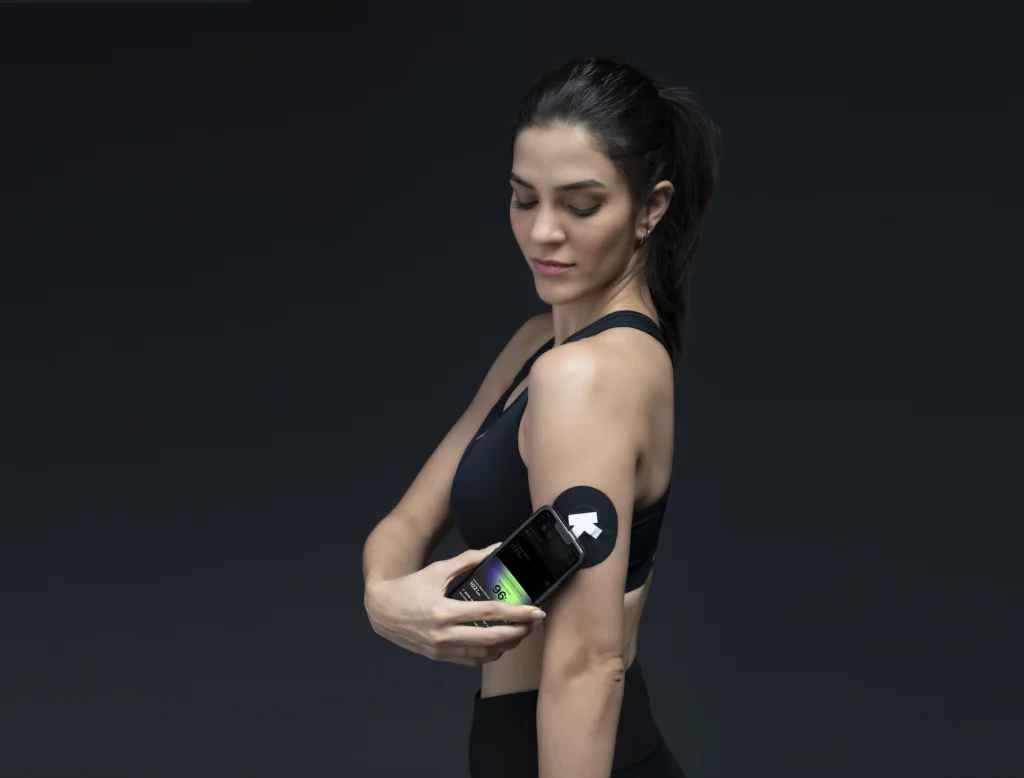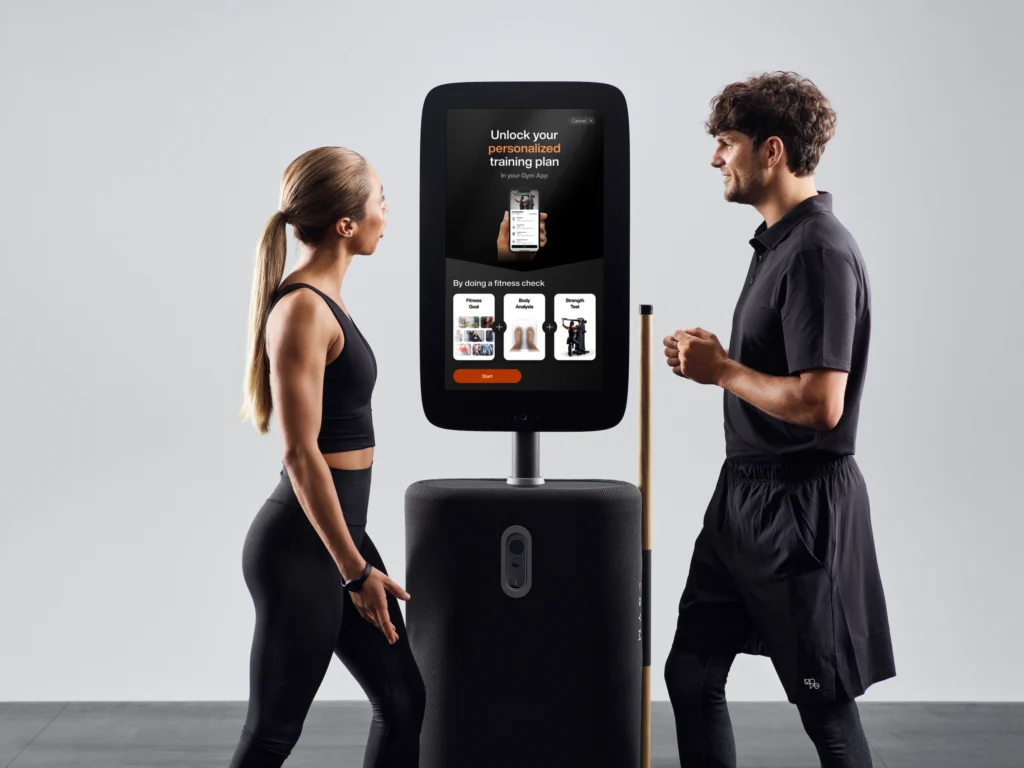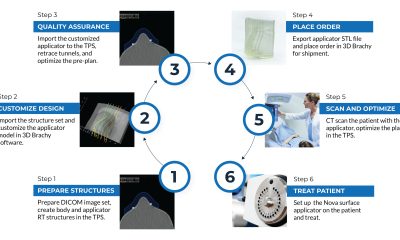Henry McKenna
NFL Reporter
Imagine a scenario where Bryson DeChambeau is on the range for a LIV Golf event. Perhaps he’d be all alone. And so it would look like he was talking to himself — thinking aloud about his swing ahead of a tournament. But he’d be thinking aloud with some … thing. He’d be speaking with AI designed to provide coaching tips to generate the purest swing possible.
He’d hit a ball in an unintended direction. And then he’d check in. The back-and-forth might go something like this:
DeChambeau: Shoot, what went wrong there?
AI: Well Bryson, your head appeared to dip two inches lower than your typical shot in the best-swing data set.

Bryson DeChambeau is one of the longest hitters in golf.
It’s a future that’s not so far off, according to Sportsbox AI and Google, the companies that collaborate with the star golfer. It’s a future that DeChambeau said he’s interested in. DeChambeau is always thinking about what’s next. About change. About the future. And so it should come as no surprise that he’s already using AI every week with an eye on the present and the future.
“AI is going to throw quite a big wrench in the whole ecosystem of golf,” DeChambeau said in a press conference where DeChambeau announced Crushers GC’s partnership with Qualcomm, a wireless company.
How, exactly?
Well, DeChambeau explained how it’s helping him.
“How the ball is launching off of the ground would be one. Pressure-sensing grip [would be another]. … And then using AI and measuring the optics of your body on just a video to see when you’re swinging it good, when you’re swinging it bad. And how to get an AI that talks to you like a golf coach, is very interesting to me,” he said.
At this moment, DeChambeau gets his answers from Google and Sportsbox AI. The latter, in particular, helps golfers and coaches answer questions about why something isn’t working. But the process takes time. Nothing is real-time — yet. The most famous use case came in June 2024 when DeChambeau first approached Sportsbox AI. He went in with a question about the inconsistencies he was getting when trying to hit a draw. Sportsbox provided him with three answers — three parts of the swing — that he needed to manage to fix his swing.
And you might remember what happened next: DeChambeau won the U.S. Open.

Bryson DeChambeau captured the 124th U.S. Open at Pinehurst in 2024.
Sportsbox AI has helped four of the top 10 golfers in the world, either by working with the player or the player’s coach.
But no pro golfer has taken to AI in golf quite like DeChambeau.
“Bryson’s definitely the one who put this into his process in an official way, week in and week out,” said Jeehae Lee, Sportsbox AI founder and former LPGA pro. “Some of the other players just may be using it in their lessons, looking at our product, but we’re not providing them this deep-dive data analysis [like DeChambeau].”
DeChambeau has thousands of swings recorded in the Sportsbox archives — more than any other golfer. And it’s his swing that is training the model to create the type of AI coach that interests DeChambeau.
“Instead of us recording the swing, downloading the data, and our data science team doing the analysis to answer his question,” Lee said. “That [process] is going to be built into the product, just like any AI agent tools that are out there. You’re able to interact with it in the way that you would with a human to ask a very human-language question. ‘Hey, that last one was bad. What happened?’ And we’re able to say, ‘Well, based on that last thing, compared with your best swing data set, these were the top three things that were very different.’”
For now, Google and Sportsbox AI have a tool that’s for the elite golfers. But with DeChambeau’s collaborative efforts, they are working to build a tool that can help golfers of every skill level to improve their swing.
Lee reiterated that Sportsbox AI didn’t want to make human swing coaches obsolete. But the company is working to create a support system for those coaches to help them do the best possible job for their players.
“Data will get you answers faster than any human can. And that’s not something that would discredit or disintermediate any human work,” Lee said. “It’s only going to elevate everybody’s work in the golf industry, so that’s kind of what we are running towards.”
When it comes to golf, DeChambeau is the king of data. He is, after all, the mad scientist, who runs experiment after experiment — including, for example, dousing his balls in water to see how the moisture affects spin rate. So it makes perfect sense DeChambeau is exploring a data-driven, disruptive technology.
“It’s helping me understand my golf swing on a deeper level,” DeChambeau said.

Bryson DeChambeau is learning how AI can also improve his putting.
DeChambeau was asked what the most innovative thing he’s done was. And he said he’d “figured out how to hit it pretty straight with the distance that I’ve created.” That’s the thing that everyone knows him for: his driver and his distance. But he also felt like he’d been innovative with his putter, too. And that’s another area where he’s used AI to seek answers, changing the way he approaches the game with finesse on the greens.
But there’s work to be done there, too.
“That’s currently what we struggle with, especially on putting when there’s only a certain amount of frame rates, like, how can we then splice the info and use not only AI to help interpret, interpret the frames in between, to get it to like, 750 [per second] but then, how do you get that tech and how do you see it more precisely over time?” DeChambeau wondered.
There’s room for growth. There’s room for learning. But DeChambeau, perhaps more than any golfer, is there for it.
“LIV Golf is innovative,” he said. “We’re innovators. The Crushers — we’re innovators.”
Before joining FOX Sports as an NFL reporter and columnist, Henry McKenna spent seven years covering the Patriots for USA TODAY Sports Media Group and Boston Globe Media. Follow him on Twitter at @henrycmckenna.
Want great stories delivered right to your inbox? Create or log in to your FOX Sports account, and follow leagues, teams and players to receive a personalized newsletter daily!

Get more from the LIV Golf Follow your favorites to get information about games, news and more




























































